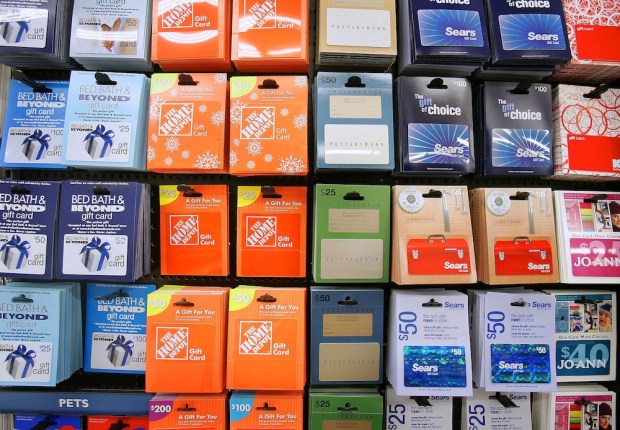A New Gift Card Hack For The Holidays

There seems to be no such thing as a Christmas vacation when one’s main profession is defrauding consumers and businesses.
It appears the ever-inventive thieves of the world have found a new way to make gift card fraud work for them this holiday season, according to the Better Business Bureau (BBB).
This year the scam relies on thieves grabbing cards off the rack, scratching the film that covers the card PIN underneath and copying the relevant numbers. They then cover over the scratched off film with a new sticker — which can be purchased in bulk on Amazon — and put the card back on the rack and wait.
A customer will eventually purchase that already-hacked gift card, at which point it will be activated. Scammers, who have been monitoring the number they lifted, will see the card go active and the funds loaded onto it, then promptly drain said funds.
As such, consumers are advised to be aware when buying a gift card for a friend or loved one this holiday season, and to take an extra close look at the security film over the cards’ PIN numbers. If the strip seems to be applied crookedly or has bubbles or lumps, consumers should move on to another card as some bad actor might have already tapped into its eventual value.
Gift cards also recently made news as a possible proponent of the nation’s drug problem and opioid crisis. Law enforcement and drug users report that the scam isn’t hard to pull off, according to CNBC. Thieves simply walk into Walmart, Target, Home Depot, Lowe’s or another big-name retailer, steal an item, return it at a different store without a receipt and receive a gift card in return, which they can then turn around and sell to a pawn shop or secondary store for a lower price.
It’s called return fraud, and unlike the cyber fraud that has become so rampant in the changing retail environment, it requires no technical savvy, other than the knowledge of how the system works and what a person can get away with at major retailers.
Retail return losses total between $9 billion and $15 billion per year, according to a 2017 survey by the National Retail Federation. More than half of companies reported fraudulent gift cards or store credit in one or more locations – 57 percent, down from 66 percent last year, but still a significant number.
Police and retailers are catching on to the issue. Some have already taken steps to curb this activity, from flagging individuals who make repeated returns to requiring ID for customers returning items to requiring that secondary markets report all cash-for-gift-card transactions to law enforcement.
